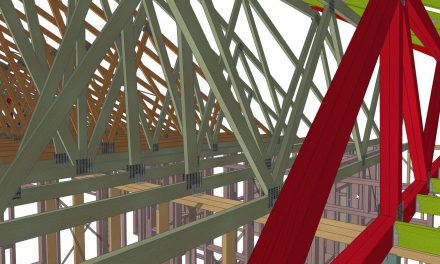I come from a long family tradition of cheapskates.
I believe broken television antenna should be saved because the bits of metal might be useful for a future project. When the switch on my grinder recently broke I spent hours repairing it rather than just dashing out to the hardware to get a new one, and, in my opinion, food isn’t too old to eat until it gets up and walks itself to the bin.
I think this approach comes from my British ancestors and, in particular, their post-war lifestyle where there was just enough to get by, but only if you were very frugal.
My father-in-law, who was a young boy during the war, is even worse. He has a large collection of electrical components from the 1970s, including boxes of transistors and old reel-to-reel tape decks that will never, ever be used. His collection of screws and bolts with archaic threads, all categorised and sorted into 1960s cigarette boxes, is something to behold.
Given my frugality, it always grieves me when I go into a roof and see wasteful examples of truss construction. The photo shown below is a cracker – a massive saddle plate. This would have occurred because of a general software setting for a truss central web joint has been applied to saddles as well.
As a minimum plate for a normal truss, that may still be valid. But in a saddle where the internal forces are trivial and a large part of the plate isn’t even connected to timber, it is just a waste of a few dollars.
I have seen so many other examples of wasteful construction. A classic is very long compression webs in steep roof pitch buildings, which are used as internal support. This occurs when the software automatically flicks through available stock sizes until it gets a design using something like 240 x 35-F27 to work.
Very often, just by changing the webbing configuration a little so that the compression web is as short as possible, or by using web ties, we can have a significant reduction in timber size.
Another example that would make my grandparents turn in their graves is large default heel plates on jack and creeper trusses. These typically have very low forces at the heel because of their short span and minimal webbing. Even handling forces are low because they are low span, so there is little sense to use a large default heel plate.
As my grandmother used to say, “Many a mickle makes a muckle”. I have no idea what a mickle or a muckle is, but I do know that a less cryptic translation could be, “Look after the pennies and the pounds look after themselves”.
Waste a dollar or two on a number of trusses and you will end up wasting that same amount over many jobs and, eventually, you could have wasted a small fortune. In my time around the truss industry I have seen lots of fabricators come and go. Many times that has been because they didn’t look closely enough at their costs.
An even older quote from ancient Rome sums it up: “Thrift comes too late when you find it at the bottom of your purse”.
Whenever I design for my customers I think of it as if I am spending my own money. I want them to have maximum bang for their buck.
In a world where time is money and materials are relatively cheap, there is always a tendency to gloss over the detail. But with the help of truss software, you have a wonderful opportunity to spend little time tweaking some settings and, as a result, all your future jobs could be just that little bit cheaper.
Have a go – my grandmother would be proud of you!
Paul Davis is an independent structural engineer managing his own consulting firm Project X Solutions Pty Ltd. The views in this column are Paul’s and do not reflect the opinions of TimberTrader News.
Phone: 02 4576 1555 Email: pauldavis@timbernews.com










